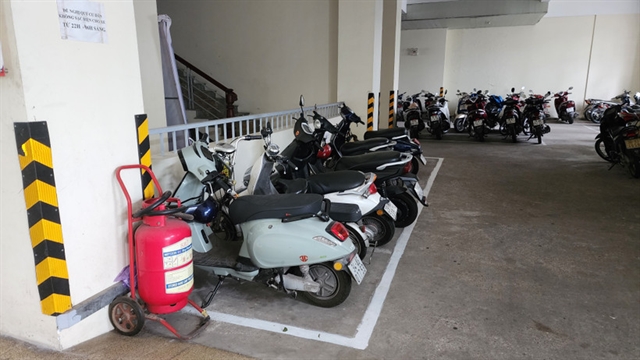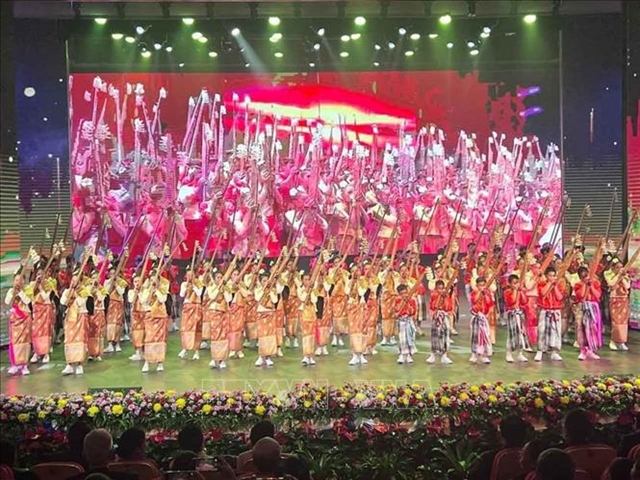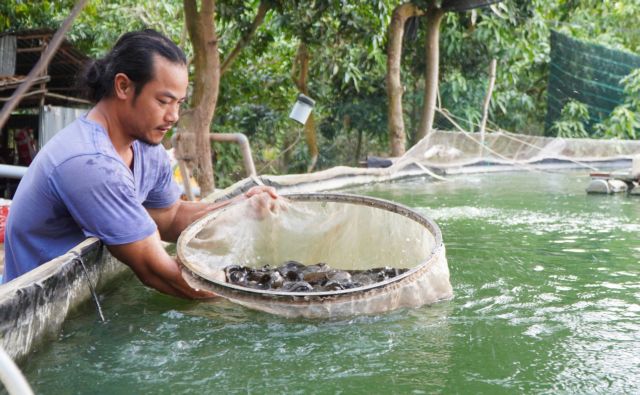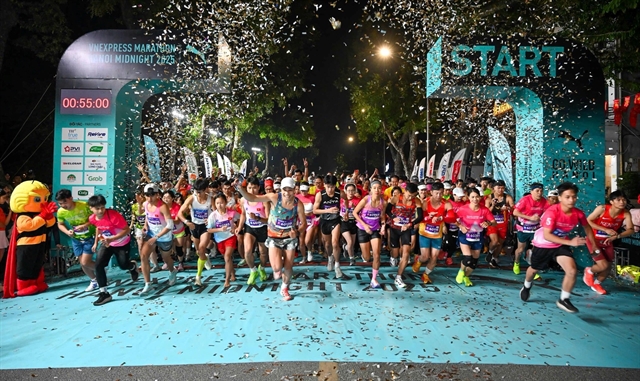 Society
Society

 |
| Fish farmer Nguyễn Chí Tâm in Đồng Tháp Province earns billions of đồng per harvest from raising local specialty fish using tarpaulin-lined tanks. — VNA/VNS Photo |
ĐỒNG THÁP — A fish farmer in the Mekong Delta Province of Đồng Tháp is earning billions of đồng from raising local specialty fish using a tarpaulin-lined tank model, which requires a smaller area than traditional farming methods and reduces costs.
In June 2021, Nguyễn Chí Tâm in Cao Lãnh City, Đồng Tháp, invested in a model for raising tire track eel and redtail botia in tarpaulin-lined tanks.
These two fish have been in high demand, so Tâm came up with the idea of raising them in his family's 4,000sq.m mango garden.
At first, Tâm encountered many difficulties because the oxygen pump system, water supply system, and filtration tanks were not compatible, leading to unstable water conditions and mass death of breeding stock.
After that, he gained experience and took a year to master the techniques of fish farming in tarpaulin-lined tanks.
After 12 months of farming, he harvested his first batch of fish, and sold 3.5 tonnes of tire track eel with a profit of about VNĐ200 million (US$8,000).
As for redtail botia, 800kg were sold for over VNĐ300 million in profit.
Although the first attempt resulted in significant losses, the high selling price of the fish during his first successful harvest ensured a promising profit.
For his second harvest, Tâm added another tarpaulin-lined tank with a volume of 200 cu.m.
With two tanks, he alternatively raised fish in separate months to avoid harvesting at the same time.
Due to his mastery of the techniques of farming tire track eel and redtail botia in tarpaulin-lined tanks, in subsequent harvests, the fish loss rate has been low, bringing him an average income of over VNĐ1 billion per harvest.
This new fish farming method offers several advantages over traditional methods, including not requiring a large area, enabling continuous farming throughout the year, reducing costs for operation, and allowing him to more easily monitor water sources, food sources, and diseases in fish, he said.
Tâm also installed a circulating water treatment system to reuse water, preventing environmental pollution, and ensuring a continuous supply of clean water to the fish tanks.
His long-term goal is to export the two local specialty fishes abroad and promote the specialties of his homeland.
Võ Thanh Tuấn, deputy chairman of the Cao Lãnh Farmers' Association, praised Tâm as one of the pioneers in Cao Lãnh City in implementing this new fish farming model with high efficiency. — VNS




